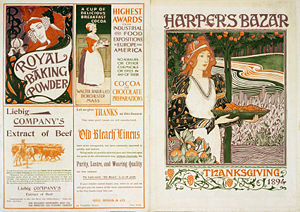Baking Powder: Difference between revisions
imported>Mary Ash No edit summary |
mNo edit summary |
||
| (One intermediate revision by one other user not shown) | |||
| Line 9: | Line 9: | ||
Single acting: Single acting baking powder can be made from several different chemical formulations: Single-acting baking powders react immediately when liquid is added to the mixture. | Single acting: Single acting baking powder can be made from several different chemical formulations: Single-acting baking powders react immediately when liquid is added to the mixture. | ||
''Those that contain cream of tartar and tartaric acid (C4H606) create gas rapidly when mixed with baking soda and a liquid. These batters must be cooked quickly or they will go flat. Slower single-acting baking powders are phosphate baking powders that contain either calcium phosphate (Ca3O8P2) or disodium pyrophosphate (H2Na2O7P2). | ''Those that contain cream of tartar and tartaric acid (C4H606) create gas rapidly when mixed with baking soda and a liquid. These batters must be cooked quickly or they will go flat. Slower single-acting baking powders are phosphate baking powders that contain either calcium phosphate (Ca3O8P2) or disodium pyrophosphate (H2Na2O7P2). Aluminium sulfate (AI2012S3) powders react more slowly at room temperature but give a bitter taste to the batter.''<ref name="How Products Are Made Volume 6: Baking Powder">{{cite web |url=http://www.madehow.com/Volume-6/Baking-Powder.html |title=How Products Are Made Volume 6: Baking Powder |accessdate=2010-09-29 |format=English}}</ref> | ||
Double Acting: A quick acting acid provides an initial rise during the mixing process followed by a second rise when heat is applied. <ref name="How Products Are Made Volume 6: Baking Powder">{{cite web |url=http://www.madehow.com/Volume-6/Baking-Powder.html |title=How Products Are Made Volume 6: Baking Powder |accessdate=2010-09-29 |format=English}}</ref> | Double Acting: A quick acting acid provides an initial rise during the mixing process followed by a second rise when heat is applied. <ref name="How Products Are Made Volume 6: Baking Powder">{{cite web |url=http://www.madehow.com/Volume-6/Baking-Powder.html |title=How Products Are Made Volume 6: Baking Powder |accessdate=2010-09-29 |format=English}}</ref> | ||
| Line 26: | Line 26: | ||
To check, or proof, the baking powder add 1 teaspoon baking powder to 1/2 cup warm water. The baking powder should immediately bubble.<ref name="Joy of Baking.com">{{cite web |url=http://www.joyofbaking.com/bakingsoda.html |title=Joy of Baking.com: Baking Powder |accessdate=2010-09-29 |format=English}}</ref> | To check, or proof, the baking powder add 1 teaspoon baking powder to 1/2 cup warm water. The baking powder should immediately bubble.<ref name="Joy of Baking.com">{{cite web |url=http://www.joyofbaking.com/bakingsoda.html |title=Joy of Baking.com: Baking Powder |accessdate=2010-09-29 |format=English}}</ref> | ||
{{reflist}} | {{reflist}}[[Category:Suggestion Bot Tag]] | ||
Latest revision as of 16:01, 15 July 2024
Baking Powder
Baking powder is used in baking as a leavening agent. Quick breads, cakes and cookies usually use baking powder as an ingredient.
Composition
Baking powder is comprised of baking soda (sodium bicarbonate, NaHCO3), cream of tartar (potassium bitartrate, C4H5KO6), and cornstarch.[1] [2]
Types
Single acting: Single acting baking powder can be made from several different chemical formulations: Single-acting baking powders react immediately when liquid is added to the mixture.
Those that contain cream of tartar and tartaric acid (C4H606) create gas rapidly when mixed with baking soda and a liquid. These batters must be cooked quickly or they will go flat. Slower single-acting baking powders are phosphate baking powders that contain either calcium phosphate (Ca3O8P2) or disodium pyrophosphate (H2Na2O7P2). Aluminium sulfate (AI2012S3) powders react more slowly at room temperature but give a bitter taste to the batter.[3]
Double Acting: A quick acting acid provides an initial rise during the mixing process followed by a second rise when heat is applied. [3]
Baking Powder Substitute
You can make your own baking powder equivalent at home.
- 2 tablespoons cream of tartar
- 1 tablespoon baking soda
- 1 tablespoon cornstarch
Mix or whisk the ingredients in a clean dry bowl. 1 teaspoon of the homemade baking powder substitute is equal to a commercially made product. [4] [5]
Storage
Store baking powder sealed in a cool, dry place no longer than one year.[6]
Proofing the Baking Powder
To check, or proof, the baking powder add 1 teaspoon baking powder to 1/2 cup warm water. The baking powder should immediately bubble.[6]
- ↑ How Products Are Made: Baking Powder (English). Retrieved on 2010-09-29.
- ↑ Food.com Kitchen Dictionary: Baking Powder (English). Retrieved on 2010-09-29.
- ↑ 3.0 3.1 How Products Are Made Volume 6: Baking Powder (English). Retrieved on 2010-09-29.
- ↑ Cooks.com Homemade Baking Powder Substitute (English). Retrieved on 2010-09-29.
- ↑ Wise Geeks Baking Powder (English). Retrieved on 2010-09-29.
- ↑ 6.0 6.1 Joy of Baking.com: Baking Powder (English). Retrieved on 2010-09-29.
